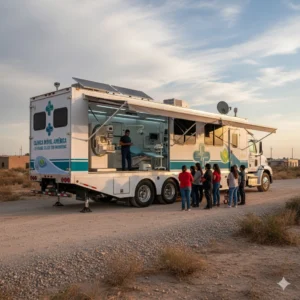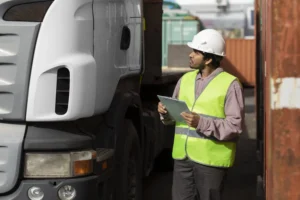When a tsunami warning is issued, acting quickly and knowledgeably can save lives.
On July 29, a magnitude 8.8 earthquake —the sixth largest ever recorded— struck Russia. As a result of the powerful quake, tsunami warnings were issued in several countries across the Pacific Ocean. Although many of these alerts have since been lifted, the U.S. National Weather Service urged residents of coastal areas to remain vigilant for at least 24 hours, as waves continue to be observed persistently.
The first tsunami waves hit the coasts of Russia and Japan, where nearly two million people were evacuated as a precaution. Later that night, the phenomenon also reached the U.S. coastline, affecting parts of Hawaii, California, Oregon, Washington, and Alaska.
When a tsunami warning is issued, acting quickly and knowledgeably can save lives. These natural events —usually triggered by undersea earthquakes— can generate powerful waves that reach coastal areas within minutes or hours. Below are key recommendations to help you stay safe.

How to Stay Safe During a Tsunami Alert
1. Stay Informed
Follow official sources such as news broadcasts, radio, television, and verified social media accounts to stay updated. Civil Protection, Tsunami Warning Centers, or national weather services are reliable sources in these situations.
2. Act Quickly
Evacuate as soon as local or national authorities instruct you to. Move to higher ground or inland. Once evacuated, do not return until the proper authorities confirm it is safe to do so. The first waves are not always the most destructive; additional waves may arrive hours after the initial event.
3. Have an Emergency Plan
Know the evacuation routes and identify safe zones in your area. Prepare an emergency kit with water, non-perishable food, a flashlight, battery-powered radio, medications, and important documents.

During the alert
- Avoid beaches and rivers near the coast.
- Stay constantly informed.
- Assist vulnerable individuals: children, the elderly, and people with disabilities should receive priority help during evacuation.
- Know your local evacuation routes.
- Choose a safe shelter in elevated terrain or far from the coast.
- Have emergency supplies ready.
After the tsunami
- Follow instructions from local authorities.
- Avoid flooded areas and damaged roads.
- Watch out for falling debris and unstable buildings.
- Stay away from floodwater, which may be contaminated.
- Use text messages or social media to contact loved ones.
- Take photos of material damage for insurance claims.

Remember: preparation and quick response are essential when facing a tsunami. Don’t underestimate the signs—act calmly and decisively.
Follow tsunami alerts in real time:
- National Tsunami Warning Center (U.S.): https://tsunami.gov
- NOAA Tsunami Event Map: https://tsunami.gov/events-map.html
- Pacific Tsunami Warning Center: https://weather.gov/ptwc/
- Global Tsunami Monitoring (UNESCO IOC): https://tsunami-monitoring.unesco.org

World Mental Health Day: how to care for truck drivers’ mental health
As part of World Mental Health Day, we focus on caring for the mental health of truck drivers. World Mental Health Day reminds us that

Solving the shortage of diesel technicians
The role of the transport industry in combating the shortage of diesel technicians: what should be done to solve it? In August 2025, the American

Mobile Clinics: The Unsung Heroes Bringing Healthcare to America’s Highways
The drivers of these massive trailers have become the unsung heroes of America’s roads, delivering life-saving medical services to every corner of the country.

Ending CDL reciprocity: the U.S. seeks stricter measures
New bill would require states to comply with the strict CDL regulations recently established. The U.S. House of Representatives has introduced new legislation aimed at

Cargo theft costs the transportation industry $18 million in losses
Cargo theft has been one of the most persistent issues facing the freight transportation industry so far in 2025. Cargo theft has been one of

Duffy Secures $41 Million to Save Essential Air Service as Shutdown Threat Looms
U.S. Transportation Secretary Sean P. Duffy announced on Wednesday that the Department of Transportation (DOT) has secured $41 million in additional emergency funding to sustain the Essential Air Service (EAS) program, a federal initiative that subsidizes commercial flights to rural and underserved communities across the United States.
